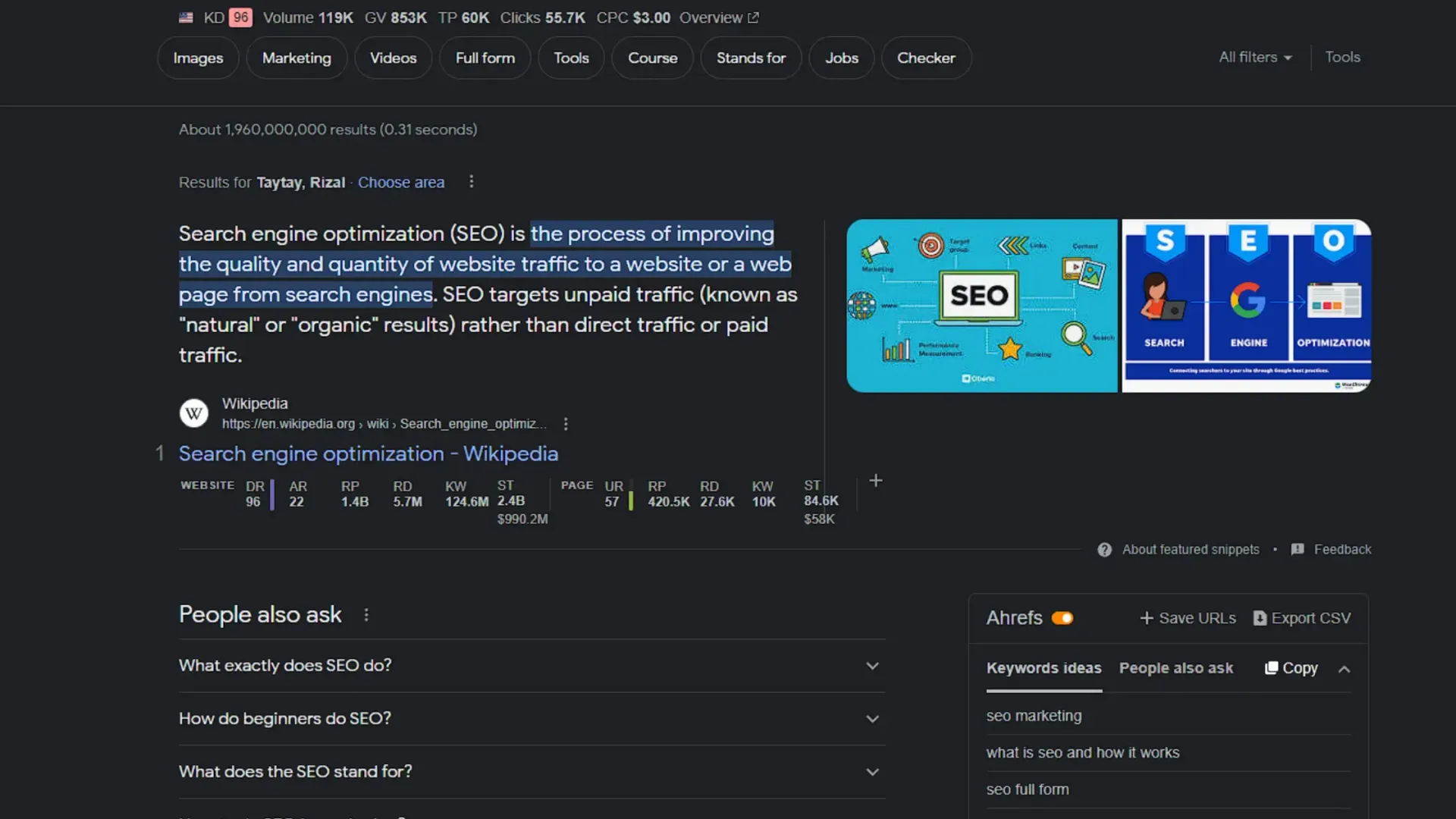Technical SEO vs Content SEO: Knowing the Differences
Understanding Technical SEO vs Content SEO

Image by gstudioimagen on Freepik
Comparison between Technical SEO vs Content SEO involves several components that aim to boost a website's visibility on search engines. Within these components, both stand out as primary pillars, each fulfilling a distinct yet interconnected role in optimizing a site's performance.
Brief Overview of SEO Components
SEO consists of key parts: keywords, enhancing content, backlinks, technical factors, and user experience. They team up to boost online visibility and rankings. Keywords shape content, backlinks add credibility, while technical factors and user experience fine-tune website performance for better outcomes.
Introduction to the two primary aspects: Technical and Content SEO
SEO embodies two fundamental components: Technical and Content SEO. Technical SEO focuses on optimizing the technical infrastructure of a website, ensuring it's easily accessible and understandable by search engines. Content SEO, on the other hand, emphasizes the quality and relevance of the content itself, aiming to create valuable, engaging material that resonates with both users and search engine algorithms.
Importance of understanding both elements for an overall SEO strategy
A comprehensive SEO strategy combines both SEO. While Technical SEO ensures a website is structured and accessible for search engines, Content SEO contributes by providing high-quality, relevant content that engages users. Understanding and harmonizing both elements are essential for achieving an effective and well-rounded SEO strategy, driving improved visibility, rankings, and user experience.
Technical SEO

Image by gstudioimagen on Freepik
Tech SEO concerns optimizing a website's technical elements to enhance its visibility and usability for search engines. It focuses on website speed, mobile responsiveness, site structure, and technical tags to ensure efficient crawling, indexing, and user experience. This optimization ensures that search engines can easily access, understand, and rank the website's content, ultimately improving its search engine rankings and visibility to users seeking relevant information or services.
Definition and Core Elements
Explaining the concept of Technical SEO and its significance
It revolves around optimizing a website's infrastructure and backend elements to enhance its visibility and accessibility to search engines. It involves strategies focusing on improving technical aspects rather than the content itself. This optimization ensures that search engine crawlers can efficiently explore and understand the site's structure, leading to better indexing and higher rankings in search results. Its ability lies in laying the groundwork for a site's overall SEO performance, ensuring that search engines can effectively navigate, interpret, and rank the website's content.
Overview of key technical elements in SEO
It embraces various important elements that impact a website's performance in search engine results:
- Website speed and performance optimization: Enhancing page loading speed and overall site performance to provide users with a smooth and efficient browsing experience.
- Mobile-friendliness and responsive design: Adapting the website's design and layout to ensure compatibility and ease of use across different devices, especially mobile phones and tablets.
- Crawlability, indexing, and site structure: Optimizing the website's layout, navigation, and internal linking to facilitate search engine crawlers in comprehensively indexing the site's content.
- Technical tags and structured data implementation: Implementing proper meta tags, schema markup, and other structured data to offer search engines additional context and information about the site's content.
These elements work together to build a technically sound website that aligns with search engine guidelines, ensuring improved visibility and accessibility to search engines and users.
Content SEO

Image by vectorjuice on Freepik
Content requires
optimizing web content to enhance its visibility, relevance, and engagement, aligning it with
search engine algorithms and user intent. It requires keyword optimization, creating high-quality and relevant content, focusing on user experience, and employing link-building tactics. This feature of SEO emphasizes crafting content that resonates with users, addresses their queries effectively, and ranks well in search engine results pages, significantly improving a website's organic visibility and traffic.
Definition and Core Elements
Explanation of Content SEO
Focuses on creating, optimizing, and delivering high-quality, valuable content that meets user needs while aligning with search engine algorithms. It concerns strategic practices to ensure content ranks well and engages users.
Overview of Key Elements
- Keyword Research and Optimization:
Conducting thorough keyword research to understand user search intent and behavior. Optimizing content by strategically integrating relevant keywords improves search visibility while ensuring natural readability. - Content Quality, Relevance, and User Intent:
Emphasizing the importance of high-quality, relevant content that fulfills user queries. Creating informative, authoritative, and engaging content tailored to user intent, ensuring it addresses their needs effectively. - User Experience, Engagement, and Multimedia Content:
Prioritize user experience by crafting engaging and easy-to-consume content—utilizing multimedia elements like images, videos, and infographics to enhance content appeal and engagement. - Content Updates, Freshness, and Link Building:
Regularly updating and refreshing content to keep it relevant and valuable and ensuring content freshness signals to search engines that the information is current and reliable. Additionally, earning high-quality backlinks from reputable sources improves authority and rankings.
Content SEO's success lies in the harmonious integration of these elements, focusing on search engine algorithms and user experience and engagement. Optimized content that satisfies search engines and users leads to higher rankings and improved website performance.
Differences and Synergies

Image by macrovector on Freepik
Content and Technical SEO differ in their approaches: Content SEO focuses on optimizing content quality, while Technical SEO focuses on-site infrastructure. Together, they synergize to enhance overall website visibility and ranking.
Contrasting Technical and Content Search Engine Optimization
Highlighting the distinct focuses and goals of each aspect
Technical SEO primarily concentrates on optimizing website infrastructure, focusing on site speed, mobile compatibility, crawlability, and structured data. Its primary goal is to improve a website's technical aspects to facilitate better crawling and indexing by search engines.
Content SEO, in contrast, centers on optimizing the content itself, focusing on quality, relevance, and user engagement. On-page SEO benefits aim to develop valuable, user-focused content that aligns with search intent and fulfills user requirements while adhering to search engine algorithms.
Emphasizing how they complement each other in an SEO strategy
While both serve different functions, collaboration is crucial for a comprehensive SEO strategy. Technical SEO ensures that the website structure is search-engine-friendly, allowing content to be effectively crawled and indexed. On the other hand, Content SEO relies on Technical SEO to provide a solid technical foundation for content visibility.
Collaboration and Interdependency
- Illustrating how effective collaboration between the two enhances overall SEO performance
Effective collaboration between Technical SEO and Content SEO is symbiotic. Technical optimization ensures that search engines can quickly discover and index valuable content, enhancing content visibility and accessibility. Simultaneously, content SEO provides substance to technical elements by furnishing quality and engaging content, making the website more attractive and relevant to users. - Explaining instances where technical optimization supports content strategies and vice versa
Instances abound where technical optimization supports content strategies and vice versa. Technical optimization, like improving site speed or enhancing mobile responsiveness, directly impacts user experience, influencing content engagement. Conversely, quality content positively affects technical aspects by encouraging user interaction, reducing bounce rates, and increasing dwell time—all factors crucial for search engine rankings.
The collaboration and interdependency between Technical SEO and Content SEO underscore the need for a holistic approach to SEO, ensuring a website is both technically sound and offers valuable content, culminating in improved rankings and user experiences.
Importance of SEO Strategy

Image by gstudioimagen on Freepik
The importance of SEO in an integrated strategy lies in maximizing website visibility, ensuring constant user experiences, and driving organic traffic. Harmonizing technical optimization and quality content creation boosts search engine rankings, enhances user engagement, and establishes credibility in diverse industries.
Significance of Technical SEO
- Discussing scenarios where Technical SEO takes precedence and its impact on website performance
Technical SEO assumes precedence when websites encounter slow loading times, poor mobile responsiveness, or indexing problems. These technical glitches directly influence user experience, leading to higher bounce rates and reduced site engagement. Addressing these technical aspects through Technical SEO significantly enhances website performance. By resolving such issues, Technical SEO ensures smoother site navigation, faster load times, and better user experiences, positively impacting search engine rankings and user satisfaction. - Highlighting industries or contexts where Technical SEO plays a critical role
Technical SEO is important in industries heavily reliant on online visibility and ideal user interaction. E-commerce platforms, news agencies, and service-oriented businesses are prime examples. E-commerce sites heavily depend on Technical SEO to provide a user-friendly experience during transactions. News agencies require efficient indexing for timely content delivery. Additionally, service-based businesses, like healthcare or legal services, need Technical SEO to ensure their websites are easily accessible and navigable, bolstering user trust and credibility.
Significance of Content SEO
- Discussing the important role of content in user engagement and organic visibility
Content SEO drives user engagement and organic visibility by delivering high-quality, relevant, and engaging content. Optimized content that caters to user queries and aligns with search engine algorithms attracts visitors and keeps them engaged. It reduces bounce rates, increases dwell time, and effectively draws organic traffic to the website. Through strategic Content SEO practices, content becomes a powerful SEO tool for E-commerce, enhancing website visibility and attracting a targeted audience. - Highlighting industries or contexts where Content SEO is incredibly influential
Industries such as education, publishing, and digital marketing heavily rely on Content SEO. Educational institutions use informative content to engage with students and offer valuable resources. Publishers leverage optimized content to reach wider readerships. Moreover, digital marketing agencies employ Content SEO to craft compelling content strategies across diverse sectors. Content SEO significantly contributes to establishing authority, credibility, and visibility in these industries, ultimately influencing overall success and audience engagement.
Striking a Balance: Technical SEO vs Content SEO
Knowing the difference between Technical SEO vs Content SEO is essential in creating a solid SEO strategy. They offer distinct advantages that form a comprehensive approach to meeting search engine requirements and user needs. Embracing their differences and collaboration leads to enhanced visibility, engagement, and sustainable growth in the fierce competition online.










